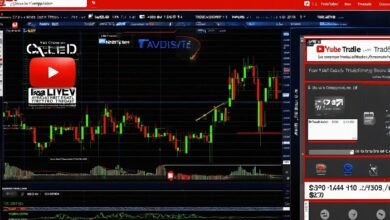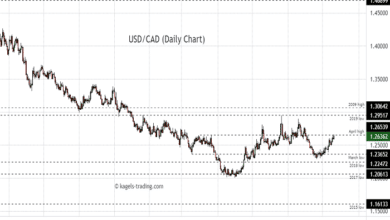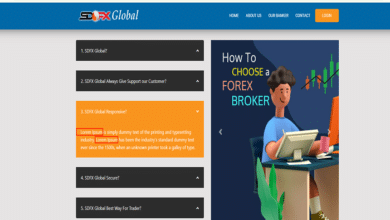
Introduction
In the fast-paced world of financial markets, smart prop trading has emerged as a revolutionary approach, enabling traders to leverage advanced technology and innovative strategies. Smart prop traders, or proprietary traders, use their own or their firm’s capital to trade assets, aiming to generate profits. This comprehensive guide explores the key aspects of smart prop trading, providing valuable insights for both aspiring and experienced traders.
What is Smart Prop Trading?
Smart prop trading involves trading financial instruments using proprietary capital, often with the aid of advanced technology and algorithms. Unlike traditional retail traders, smart prop traders operate with higher stakes and sophisticated tools, aiming for substantial profits.
The Evolution of Smart Prop Trading
The concept of prop trading is not new, but the integration of smart technology has transformed it. Early prop traders relied heavily on market intuition and manual analysis. Today, smart prop traders utilize artificial intelligence (AI), machine learning (ML), and big data analytics to gain a competitive edge.
The Role of Technology in Smart Prop Trading
Technology is the backbone of smart prop trading. Advanced trading platforms, AI-driven algorithms, and real-time data analytics enable smart prop traders to make informed decisions quickly. These tools help in identifying market trends, executing trades efficiently, and managing risks effectively.
Key Strategies Employed by Smart Prop Traders
Smart prop traders employ a variety of strategies to maximize their profits. These include high-frequency trading (HFT), arbitrage, swing trading, and algorithmic trading. Each strategy is designed to exploit specific market inefficiencies, ensuring consistent returns.
Benefits of Becoming a Smart Prop Trader
Becoming a smart prop trader offers numerous benefits. These include access to cutting-edge technology, higher profit potential, and the ability to trade a wide range of assets. Additionally, smart prop traders often enjoy greater autonomy and flexibility compared to traditional traders.
Challenges Faced by Smart Prop Traders
Despite the advantages, smart prop traders face several challenges. Market volatility, regulatory changes, and the need for continuous technological upgrades are some of the hurdles. Successful smart prop traders must adapt quickly to these challenges to stay competitive.
Essential Tools for Smart Prop Traders
To excel as a smart prop trader, having the right tools is crucial. Essential tools include advanced trading platforms, data analytics software, AI algorithms, and robust risk management systems. These tools provide the necessary support to execute trades efficiently and manage risks effectively.
Building a Smart Prop Trading Strategy
Developing a smart prop trading strategy involves thorough research, backtesting, and continuous refinement. Smart prop traders need to stay updated with market trends, economic indicators, and technological advancements. A well-defined strategy can significantly enhance trading performance.
Risk Management in Smart Prop Trading
Risk management is a critical aspect of smart prop trading. Smart prop traders use various techniques to mitigate risks, including diversification, stop-loss orders, and position sizing. Effective risk management ensures long-term profitability and minimizes potential losses.
Future Trends in Smart Prop Trading
The future of smart prop trading looks promising, with advancements in AI, quantum computing, and blockchain technology poised to revolutionize the industry. As these technologies evolve, smart prop traders will have even more tools at their disposal to gain a competitive edge in the market.
Conclusion
Smart prop trading represents the pinnacle of modern trading, combining cutting-edge technology with sophisticated strategies. By leveraging advanced tools and techniques, smart prop traders can navigate the complexities of financial markets and achieve substantial profits. Aspiring traders should focus on continuous learning and adaptation to thrive in this dynamic field.
FAQs
1. What is the difference between a retail trader and a smart prop trader?
A retail trader uses personal funds to trade, often with limited access to advanced tools. In contrast, a smart prop trader uses proprietary capital and leverages sophisticated technology and strategies to maximize profits.
2. How do smart prop traders manage risks?
Smart prop traders employ various risk management techniques, including diversification, stop-loss orders, and position sizing. These methods help minimize potential losses and ensure long-term profitability.
3. What technologies are essential for smart prop trading?
Essential technologies for smart prop trading include advanced trading platforms, AI-driven algorithms, real-time data analytics, and robust risk management systems. These tools enable traders to make informed decisions and execute trades efficiently.
4. Can anyone become a smart prop trader?
While anyone can aspire to become a smart prop trader, it requires a deep understanding of financial markets, proficiency in using advanced technology, and a well-defined trading strategy. Continuous learning and adaptation are key to success.
5. What are the main strategies used by smart prop traders?
Smart prop traders use a variety of strategies, including high-frequency trading (HFT), arbitrage, swing trading, and algorithmic trading. Each strategy is designed to exploit specific market inefficiencies and ensure consistent returns.





